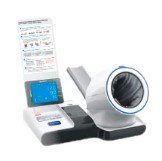The Impact of New Trends in the Global Medical Device Industry on Laboratory Equipment in Phlebotomy Procedures
Summary
- New trends in the global medical device industry are shaping the laboratory equipment used in phlebotomy procedures in the United States.
- Advancements in technology, such as automation and digitization, are improving efficiency and accuracy in phlebotomy procedures.
- The evolving landscape of Regulations and standards is influencing the development and implementation of laboratory equipment in the field of phlebotomy.
The Impact of New Trends in the Global Medical Device Industry on Laboratory Equipment in Phlebotomy Procedures
Introduction
Phlebotomy, the practice of drawing blood for diagnostic testing, plays a crucial role in the healthcare industry. As technology continues to advance in the global medical device industry, new trends are shaping the laboratory equipment used in phlebotomy procedures in the United States. From automation to digitization, these trends are not only improving the efficiency and accuracy of phlebotomy procedures but also influencing the development and implementation of laboratory equipment in the field.
Advancements in Technology
One of the key trends in the medical device industry impacting laboratory equipment in phlebotomy procedures is the advancements in technology. Automation, for example, has revolutionized the way blood samples are collected and processed. Automated blood collection devices can significantly reduce the risk of human errors, improve the quality of samples, and enhance patient comfort during the procedure.
Furthermore, digitization is another technological trend that is transforming the landscape of phlebotomy procedures. Digital health records and electronic medical devices are becoming increasingly common, allowing for seamless data management and communication between Healthcare Providers. This digital shift presents new opportunities for integrating laboratory equipment into the overall healthcare system, improving efficiency and patient care.
Regulations and Standards
In addition to technological advancements, the evolving landscape of Regulations and standards also has a significant impact on laboratory equipment used in phlebotomy procedures. In the United States, organizations such as the Food and Drug Administration (FDA) and the Clinical and Laboratory Standards Institute (CLSI) set guidelines for the design, manufacturing, and use of medical devices, including those used in phlebotomy.
Compliance with these Regulations is essential for ensuring the safety and effectiveness of laboratory equipment in phlebotomy procedures. Manufacturers must adhere to strict Quality Control processes and testing procedures to meet the standards set forth by regulatory bodies. As Regulations continue to evolve, the development and implementation of laboratory equipment in the field of phlebotomy are likely to be influenced by these changes.
Impact on Healthcare Providers and Patients
The impact of new trends in the global medical device industry on laboratory equipment used in phlebotomy procedures extends beyond the technology and Regulations themselves. Healthcare Providers and patients also stand to benefit from these advancements in various ways.
For Healthcare Providers, improved laboratory equipment can lead to increased efficiency, accuracy, and productivity in phlebotomy procedures. Automated devices, for example, can streamline the blood collection process, reducing the time and resources required for sample collection and processing. This, in turn, allows Healthcare Providers to focus on patient care and other essential tasks, ultimately enhancing the overall quality of healthcare services.
Patients also experience the benefits of advanced laboratory equipment in phlebotomy procedures. Automation and digitization can enhance the patient experience by minimizing discomfort during blood draws, reducing the risk of errors, and improving the speed and accuracy of Test Results. In addition, the integration of digital health records can facilitate better communication between patients and Healthcare Providers, leading to more personalized and efficient care.
Conclusion
New trends in the global medical device industry are shaping the laboratory equipment used in phlebotomy procedures in the United States. Advancements in technology, such as automation and digitization, are improving efficiency and accuracy in phlebotomy procedures, while the evolving landscape of Regulations and standards is influencing the development and implementation of laboratory equipment in the field. These trends have a significant impact on Healthcare Providers and patients, ultimately contributing to the advancement of healthcare services in the United States.

Disclaimer: The content provided on this blog is for informational purposes only, reflecting the personal opinions and insights of the author(s) on the topics. The information provided should not be used for diagnosing or treating a health problem or disease, and those seeking personal medical advice should consult with a licensed physician. Always seek the advice of your doctor or other qualified health provider regarding a medical condition. Never disregard professional medical advice or delay in seeking it because of something you have read on this website. If you think you may have a medical emergency, call 911 or go to the nearest emergency room immediately. No physician-patient relationship is created by this web site or its use. No contributors to this web site make any representations, express or implied, with respect to the information provided herein or to its use. While we strive to share accurate and up-to-date information, we cannot guarantee the completeness, reliability, or accuracy of the content. The blog may also include links to external websites and resources for the convenience of our readers. Please note that linking to other sites does not imply endorsement of their content, practices, or services by us. Readers should use their discretion and judgment while exploring any external links and resources mentioned on this blog.
